Archivo de noticias y eventos
451 - 500 de un total de 2404
También puede acceder a la lista de noticias publicadas en los medios relacionadas con el Instituto de Astrofísica de Andalucía - CSIC.
Pages

|
02/06/2022 - 12:30
SO Coloquio: The Antikythera Mechanism and the Mechanical Universe The Antikythera Mechanism. An astronomical calculator and display device found in a first century BCE shipwreck, it is mechanically more sophisticated than anything known from the subsequent millennium. I want to argue that we should be showing admiration rather than amazement, and that the Mechanism fits rather well into its historic context. But this fit has major implications for the development of humanity’s view of the Universe. Prof. Michael G. Edmunds |
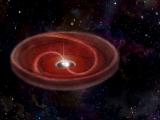
|
23/06/2022 - 12:30
Disks around evolved binaries: do they form second-generation planets? Most of the planets are formed around young stars. But can they also form around dying stars? The origin of the diversity and complexity of the detected exoplanetary systems stems from how they form in protoplanetary disks. These disks are intensively studied around young stars thanks to the high-angular resolution provided by recent instruments (VLT, ALMA). However, similar disks are also found around evolved stars, namely post-AGB binaries,... Dr. Jacques Kluska |
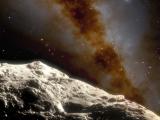
|
01/02/2022
Detectan el segundo asteroide troyano alrededor de la Tierra Los troyanos son asteroides que comparten órbita con un planeta en torno a sus puntos estables de Lagrange, situados sesenta grados por delante y detrás del planeta en su órbita. Muy estudiados en otros planetas, como Júpiter, que cuenta con varios miles, hasta ahora solo se había hallado uno alrededor de la Tierra |

|
21/03/2022 - 01/04/2022
PySnacks for beginners Online |

|
19/01/2022
La imagen con mayor resolución de la galaxia OJ 287 sugiere que alberga un agujero negro supermasivo binario El Instituto de Astrofísica de Andalucía (IAA-CSIC) encabeza un trabajo que combina observaciones de radiotelescopios en tierra y en el espacio para estudiar las regiones centrales de la galaxia OJ 287 |
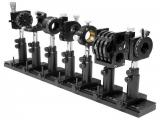
|
07/02/2022 - 18/02/2022
SO Instrumentation School IX. Opto-mechanical systems and mechanical design of IR instrumentation Granada |

|
17/01/2022
La exposición AstrónomAs llega a Granada Desde hoy hasta finales de mes permanecerá instalada en el patio del Ayuntamiento de Granada, de donde se trasladará al Parque de las Ciencias de Granada. |
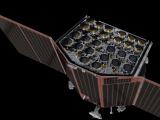
|
17/01/2022
Luz verde a la siguiente fase de la misión PLATO El pasado 11 de enero la misión PLATO de la Agencia Espacial Europea (ESA), en la que el participa el Instituto de Astrofísica de Andalucía, recibía luz verde para continuar con su desarrollo tras superar con éxito la revisión de hitos críticos |

|
25/01/2022 - 12:30
Cosmological QUOKKAS: Proof of concept and early results on the Hubble Constant tension Distances are one of the most important yet difficult to get quantities in astronomy. Normally, astronomers use redshifts (which are relatively easy to measure) as distance measure, but this only works if one assumes that there is a relationship between redshift and distance. The relationship between redshift and distance was first observationally verified in the 1920s by Edwin Hubble. He found that the further away a galaxy was, the galaxy... Dr. Jeff Hodgson |
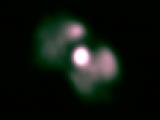
|
13/01/2022
El reencuentro con una nebulosa planetaria 30 años después revela cambios y una posible estrella compañera El Instituto de Astrofísica de Andalucía (IAA-CSIC) encabeza una investigación con datos del Observatorio de Calar Alto (CAHA) que muestran variabilidades en la nebulosa planetaria IC4997 |
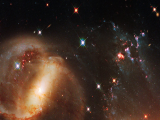
|
23/05/2022 - 27/05/2022
IAA-CSIC Severo Ochoa Advanced School on Galaxy Evolution Granada |

|
20/01/2022 - 12:30
Astronomy for attaining sustainable development goals in Africa Education and its contribution to science, technology, and innovation are the key points for combating poverty in the long term. Education is also a key point for empowering girls and women, which is fundamental for achieving the United Nations Sustainable Development Goals (SDGs). Astronomy is a powerful tool to promote education and science but, in addition to that, it is also one of the leading sciences for bringing strong technological... Dra. Mirjana Povic |
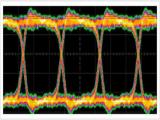
|
04/04/2022 - 08/04/2022
SO Instrumentation School VIII. Signal Integrity and Electromagnetic Compatibility in Electronic Devices Granada |

|
17/01/2022 - 22/01/2022
SO Instrumentation School VII. Metrology with PC-DMIS on a portable Romer Absolute Arms Granada |

|
14/03/2022 - 18/03/2022
English for Academic Purposes - an online workshop series for young researchers Granada |
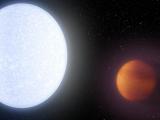
|
22/12/2021
Hallan oxígeno en la atmósfera del planeta extrasolar más caliente conocido Un equipo con participación del Instituto de Astrofísica de Andalucía (IAA-CSIC) publica el hallazgo de átomos de oxígeno en KELT-9b, la primera detección de este compuesto en una atmósfera exoplanetaria. |

|
22/12/2021
Captan distintos pulsos en la llamarada magnética gigante de una estrella de neutrones En apenas una décima de segundo, un magnetar -un tipo especialmente magnético de estrella de neutrones- liberó una energía equivalente a la que produce el Sol en cien mil años. Su estudio en detalle ha revelado múltiples pulsos en el pico de la erupción, que permitirán comprender estas aún poco conocidas llamaradas magnéticas gigantes |
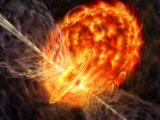
|
16/12/2021
El dramático baile final de las estrellas que comparten envoltura El Instituto de Astrofísica de Andalucía (IAA-CSIC) participa en el estudio de quince estrellas peculiares que han resultado ser estrellas dobles que, tras compartir envoltura, perdieron gran parte de su masa |
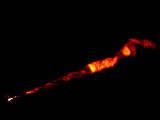
|
07/12/2021
Observan una estructura de doble hélice en el chorro que emana del agujero negro de la galaxia M87 Producido por el campo magnético, es la primera vez que se observa esta estructura a distancias tan lejanas del agujero negro. El Instituto de Astrofísica de Andalucía (IAA-CSIC) participa en el descubrimiento |
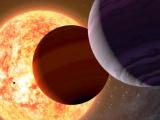
|
02/12/2021
Los planetas gigantes podrían alcanzar su madurez antes de lo esperado El Instituto de Astrofísica de Andalucía (IAA-CSIC) participa en el estudio de los planetas gigantes del sistema V1298 Tau, que en apenas veinte millones de años ya han alcanzado su tamaño final. El hallazgo ha sido posible gracias a medidas de velocidad radial de los espectrógrafos HARPS-N, en el Observatorio Roque de los Muchachos (ORM), y de CARMENES, en el Observatorio de Calar Alto (CAHA) |

|
01/12/2021
La investigadora Isabel Márquez y la Unidad de Cultura Científica del IAA-CSIC, premios "Granada Ciudad de la Ciencia y la Innovación" Estos galardones tienen por objetivo reconocer y divulgar la actividad científica en el ámbito de la ciudad de Granada a través de diferentes categorías. |

|
05/05/2022 - 12:30
Unexplored outflows in nearby low luminosity AGNs: the case of NGC 1052 NGC1052 is considered the prototype of AGN-LINERs, an AGN family at low-luminosity for which, so far, the role of outflows in their evolution has been studied the less. Thanks to MUSE and MEGARA IFS-cubes we found that the stars are distributed in a dynamically hot disc whereas the ionised gas is detected mostly in the polar direction up to 3.3 kpc. We found evidences evidence of an ionised gas outflow (jet-powered) propagating in a cocoon of... Dra. Sara Cazzoli |
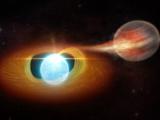
|
25/11/2021
En llamas y en proceso de ruptura por su compañera estelar Se halla un sistema formado por una estrella enana blanca y un objeto pequeño, posiblemente un planeta, tan próximos que el segundo es abrasado por la radiación de la estrella, haciendo que su atmósfera se evapore |

|
24/02/2022 - 12:30
SO Webloquio: Exploring the transient radio sky with the SKA and its precursors Radio astronomical observations probe particle acceleration in some of the most extreme environments in the Universe. For example, we can trace the relativistic jets produced by accreting black holes; observe flashes from hyper-magnetised neutron stars; and study the aftermath of stars that are ripped to shreds as they pass close to super-massive black holes. These events provide critical information about the extremes of the Universe, but they... Dr Jason Hessels |

|
27/01/2022 - 12:30
La IAU más cerca que nunca The International Astronomical Union (IAU) has more that 13000 members. Each country pays according to a table that has to do with the number of people belongin to the IAU. But the IAU is not only a club of members but has a number of activities that are open to every member. In particular the IAU run 9 Symposia per year with topics relevant to current astrophysics. On years where there are a General Assembly on top of the 9 Symposia the IAU... Dr. José Miguel Rodriguez Espinoza |

|
17/02/2022 - 12:30
The Africa Millimetre Telescope project - extending the EHT The Africa Millimetre Telescope (AMT) project led by the Radboud University and the University of Namibia aims to realise a new telescope on the Gamsberg mountain in Namibia to extend the existing network of telescopes that together form the EventHorizonTelescope (EHT). For the future of the EHT more independent nodes in the network are needed to increase the overal redundancy of the network and to improve the image quality and allow for time-... Dr. Marc Klein Wolt |
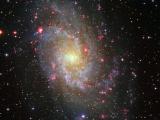
|
17/11/2021
Se halla una posible galaxia satélite de M33, una galaxia vecina del Grupo Local M33, también conocida como la galaxia del Triángulo, es la tercera mayor galaxia del Grupo Local, después de Andrómeda y la Vía Láctea. El hallazgo se enmarca en la búsqueda de los “satélites perdidos”, que trata de resolver la discrepancia entre los modelos de formación de galaxias y las observaciones de las galaxias del Grupo Local |
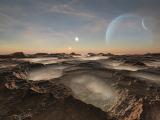
|
15/11/2021
Nomadas estelares Reportaje de Lucía Casas, periodista científica actualmente de estancia en el IAA-CSIC como parte de las I Ayudas CSIC-Fundación BBVA de Comunicación Científica. |

|
25/11/2021 - 19:00
Alfonso X, el rey que supo ser sabio En esta charla se repasarán algunas de sus contribuciones a la cultura y al saber, priorizando aquellas de carácter científico. Antonio Claret |

|
11/11/2021
Nuevas perspectivas sobre el problema de las galaxias sin materia oscura El hallazgo de numerosas galaxias de muy bajo brillo en el entorno de NGC 1052 aporta un indicio crucial en el debate sobre la carencia de materia oscura en algunas galaxias de este grupo. Los nuevos datos apuntan a la existencia de un grupo de galaxias más próximo que NGC 1052, al que pertenecerían estas galaxias anómalas, y la cercanía resolvería el problema |

|
21/10/2021 - 22/02/2022
Spanish for beginners at the IAA-CSIC Granada |
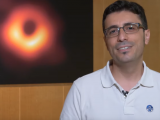
|
23/10/2021
El Investigador del IAA-CSIC, Rocco Lico, recibe el premio "Early Career 2021" del EHT El Investigador del IAA-CSIC, Rocco Lico, recibe el premio "Early Career 2021" del EHT |

|
15/11/2021 - 19/11/2021
SO Instrumentation School: V. Project management in the 3DExperience environment, including document and requirements management On line |
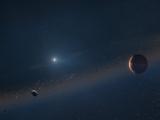
|
13/10/2021
Hallado un sistema planetario que permite vislumbrar el futuro del Sistema Solar tras la muerte del Sol El IAA-CSIC participa en el descubrimiento de un sistema formado por una estrella enana blanca y un planeta similar a Júpiter. El hallazgo, publicado en ‘Nature’, muestra que los planetas pueden sobrevivir a la muerte de su estrella |

|
11/01/2022 - 12:30
SO Webloquio: Active Galactic Nuclei as seen from the 7 X-ray eyes of eROSITA Active Galactic Nuclei (AGN) are not longer considered part of a small and exotic source population but are now widely accepted to play a significant role in the evolution of galaxies through cosmic time. However, even 20 years after the realization of the close link between the galaxies and the active SMBH that they host, the various mechanisms and the interconnection are not fully clear. Two complementary approaches are followed to deepen our... Dra. Mara Salvato |

|
09/06/2022 - 16:30
SO Webloquio: Space Weather in an Era of Innovative Science The newest generation of solar observational data is allowing a pivot toward making connections in the various solar physics domains and facilitating advanced modeling for space weather conditions and impacts. We study important physical couplings in the solar atmospheric layers, as well as connections from the solar corona through the heliosphere. To advance our understanding of how solar activity and variability impact space weather conditions... Dr. Holly Gilbert |

|
10/03/2022 - 12:30
The RoboPol Program: Optical Polarimetric Monitoring of Blazars Blazars are a subclass of Active Galactic Nuclei with relativistic jets pointing at us. For this reason the highly amplified polarized synchrotron emission from their jets dominates in the optical band. Typically, the electric vector position angle (EVPA) of the optical polarized emission in blazars varies in an erratic way. However, in rare cases the EVPA displays long, smooth and monotonic rotations. Being puzzled by this phenomenon missing a... Dr. Dimitriy Blinov |

|
23/11/2021 - 12:30
Search for MIlli-LEnses (SMILE) to discriminate between dark matter models Projects aimed at characterising dark matter properties make use of very different approaches. One such approach is to look for strong gravitational lens systems. Gravitational lensed images with angular separation on milliarcsecond scales probe gravitational lens systems where the lens is a compact object with mass in the range 10^6-10^9 solar masses, i.e a supermassive compact object (SMCO). This mass range is particularly critical for the... Dra. Carolina Casadio |

|
03/03/2022 - 12:30
The continuous rise of bulges out of galactic disks A tantalizing enigma in extragalactic astronomy concerns the chronology and driving mechanisms of the buildup of the central luminosity excess (bulge) in spiral galaxies like our Milky Way, i.e. in systems referred to as late-type galaxies (LTGs) in the Hubble classification scheme. The standard scenario envisages a two-phase galaxy formation process, with the bulge assembling first in a quick and violent quasi-monolithic episode, with the disk... Dr. Iris Breda |

|
04/11/2021 - 12:30
Identification and characterisation of emission line galaxies with J-PAS The Javalambre-Physics of the Accelerating Universe Astrophysical Survey (J-PAS) is expected to map thousands of square degrees of the northern sky with 56 narrow band filters (spectral resolution of R around 60) in the upcoming years. This resolution allows to study emission line galaxies (ELG) with equivalent widths of a few armstrongs. Meanwhile the Pathfinder J-PAS camera observed 1 deg^2 with the same photometric system than J-PAS, named... Gines Martinez Solaeche |

|
14/10/2021 - 12:30
The miniJPAS survey: the galaxy populations in the miniJPAS cluster mJPC2470-1771 Galaxy clusters are one of the largest structures in the Universe. Due to the interaction among the galaxy members, they are a great laboratory to study the role of the environment in galaxy evolution. J-PAS survey will soon start to scan thousands of square degrees in the sky, and with its large great field of view (4.2 square degrees) and filter system (56 narrowband filters and 4 broadband filters in the optical spectral range) will provide... Julio Rodriguez Martin |
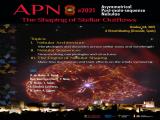
|
04/10/2021 - 08/10/2021
Asymmetrical Post-main-sequence Nebulae 8 e2021: The Shaping of Stellar Outflows Online |

|
20/10/2021 - 22/10/2021
SO Instrumentation School: IV. Vacuum Technology Granada |

|
13/01/2022 - 12:30
Galaxy morphologies in multi-wavelength surveys In this talk I will present novel results obtained by using a combination of broad and narrow band optical photometry, from the J-PAS and S-PLUS surveys, in the determination and study galaxy of galaxies’ morphologies. In particular we used Morfometrika and GALFITM to recover non-parametric and parametric values to characterize galaxies’ shapes, as well as a deep learning method for the S-PLUS survey to classify galaxies into early and late type... Dra. Arianna Cortesi |

|
28/10/2021 - 12:30
Seen the Unseen in Planetary Nebulae with High-dispersion Integral Field Spectroscopic Observations Planetary nebulae (PNe), the short-lived progeny of low- and intermediate-mass stars, may embed structures with varying kinematical, physical and chemical properties that disclose the rich variety of processes occurring during their formation. These structures hide in direct images, projected against the bright nebular emission, but the advent of high-dispersion integral field spectroscopic (HD IFS) observations provide the means to... Dr. Martín Guerrero |

|
21/10/2021 - 12:30
Unveiling the dynamical stage of galaxy clusters through the intracluster light The intracluster light (ICL) is the most unexplored component of galaxy clusters. It is defined as a low surface brightness, extended emission composed by stars that are bound by the potential of the cluster but do not belong to any galaxy in particular. Simulations predict that minor and major mergers can mainly drive the formation of ICL, specially for z Dra. Yolanda Jimenez-Teja |

|
16/12/2021 - 12:30
Lighthouse Piercing Through the Storm Clouds in Massive Star Formation Massive stars play crucial roles in determining the physical and chemical evolution of galaxies. They shape their environment from early in their protostellar phase when they blast the surrounding with powerful jets, up until their violent deaths in the form of supernova. However, they form deeply embedded in their parental clouds, making it challenging to directly observe these stars and immediate environments. Notwithstanding, their massive... Dr Ruben Fedriani |

|
09/12/2021 - 12:30
SO Webloquio: Unveiling the unseen magnetized universe with MeerKAT Galaxy clusters are known to harbour magnetic fields, the nature of which remains unresolved. Intra-cluster magnetic fields can be observed at the density contact discontinuity formed by cool and dense plasma running into hot ambient plasma, and the discontinuity exists near the second brightest galaxy, MRC0600-399, in the merging galaxy cluster Abell 3376 (redshift 0.0461). Elongated X-ray emission in the east–west direction shows a comet-like... Dr. James Chibueze |

